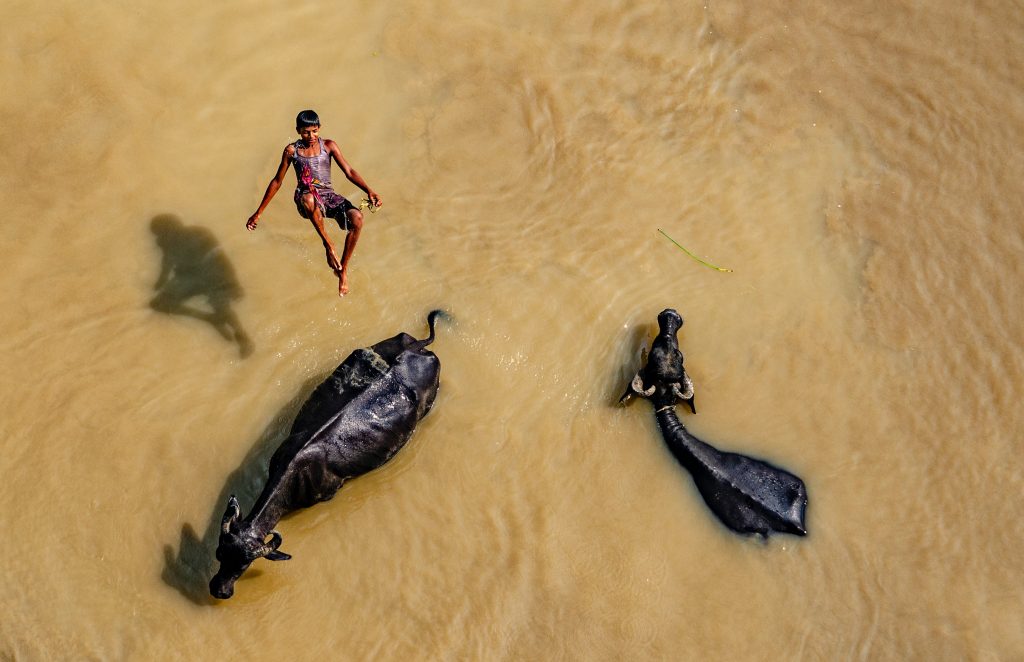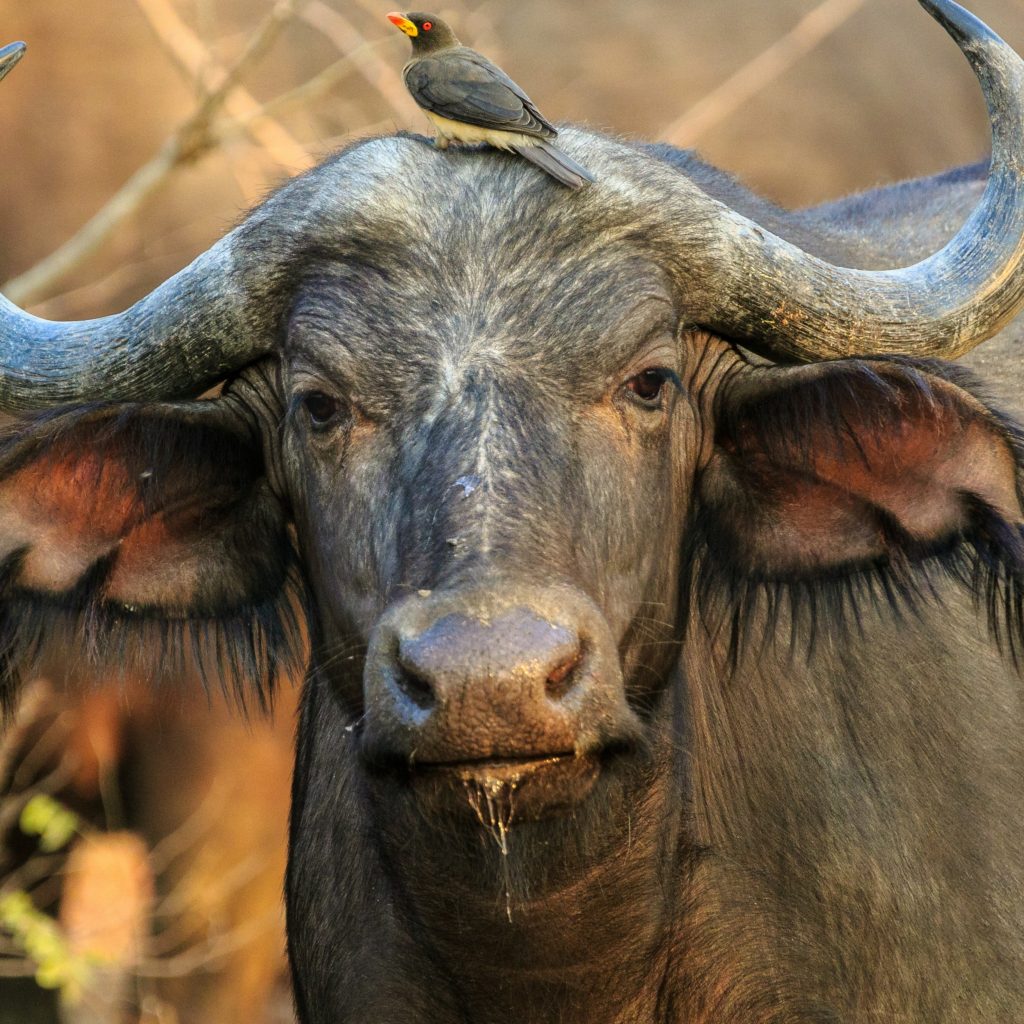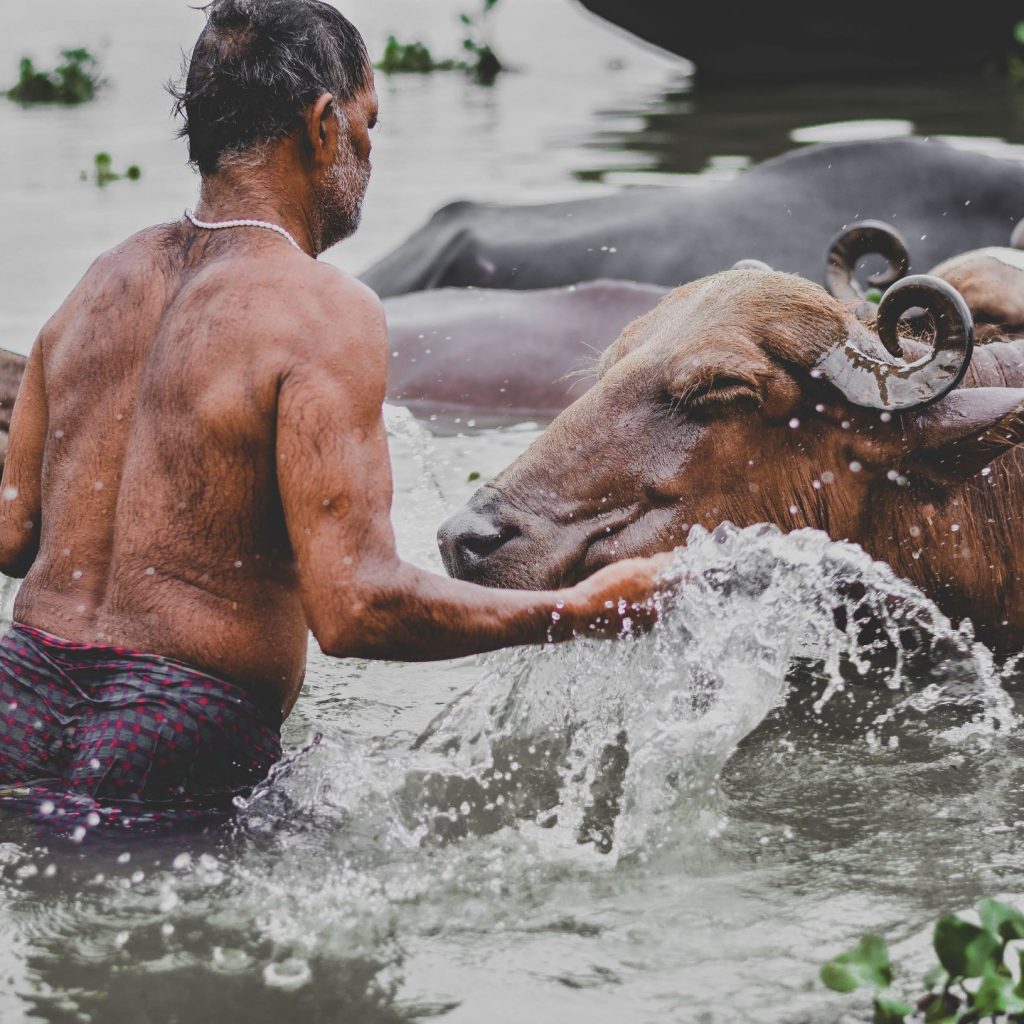
INDIAN BUFFALO |THE UNSUNG HERO OF INDIAN MILK INDUSTURY │ WATER BUFFALO
The Indian milch-animal scene is riddled with strange complexities, puzzles, and paradoxes, one being that though the subcontinent is framed by regions representing the most diverse bovine gene pool on earth, most of India’s Asian neighbours scorn the creatures’ milk. From Assam eastward into several Southeast Asian countries, wild bovine jungle species, including gaur, kouprey, and banteng, still survive along with some domesticated offshoots. But there is little local use of either the tame animals’ milk or that of zebu cattle.
To the north, the picture is different. From the western Himalayas through and beyond Mongolia, people have been herding a towering, fur-draped bovine cousin, Bos grunniens, for about twenty-five hundred years. Westerners usually call it “yak,” though Tibetan speakers protest that the correct word for the female is dri. In any case, not only is yak, or dri, milk famously cherished wherever the creature is raised, but it is traditional to exploit the phenomenon of “hybrid vigor” by crossbreeding yaks with both zebu and taurine cattle for, among other benefits, increased milk yields in female offspring. Dri milk report that it is a lovely golden colour with an extraordinarily deep, rich flavour; some experiments with Western-style cheeses have been made in Nepal and elsewhere.
Buffalo Milk │India Cow Belt | Buffalo Nation
None of these bovine cousins encroaches on the milk-giving role of the sacred zebu cow in India proper. But an entirely different creature does. Strange as it may seem to anyone else, Indians rely less on the milk of the sacred cow than on that of this nonbovine competitor, the fourth of the world’s leading dairy animals. More than half the nation’s milk supply actually comes from the “river” strain of the water buffalo, Bubalus bubal.

This formidable-looking ruminant is a long, massive, low-slung, splayfooted beast with a hide like a hippopotamus and a pair of fearsome ridged horns. Water buffaloes should not be confused with bison, which strictly speaking aren’t buffaloes at all.
Like oxen elsewhere, domesticated buffaloes were the great facilitators of a certain staple crop ,in this case rice, since they can pull plows through muddy or semi-flooded paddies that other animals could never negotiate.
Their meat is considered at least equal to beef wherever both are eaten. But for some reason, only India showed any interest in their milk or developed a particular strain suitable for that purpose. All other Far Eastern regions bred large, thickset draft buffaloes of the “swamp” strain. The Indian “river” buffalo is a rangier, bonier type that diverts a great deal of food energy into lactation. In fact, it may be the most remarkable of all milch animals.
What sets river buffaloes apart from the rest of the crew is that they produce not only richer milk but more milk than nearly all the res and this with far less intensive breeding-and-feeding efforts than have gone into increasing the yields of Western dairy cows. The only higher-volume producers among the four major milch animals. Only sheep give milk that is equally or more concentrated but, there’s very little of it.
Buffaloes’ milk has an odd glaucous appearance, suggesting that it shouldn’t be nearly as creamy as cows’ milk. In fact, it is much creamier. People like it for it seems almost like a concentrated milk reduction. Judging from the buffalo yogurt and mozzarella that is prevalent , it seems to have some special earthy dimension of its own quite unlike the goaty-sheepy flavors of caprines’ milk. What’s more, the animals thrive and produce copiously on cheaper and coarser tropical forages than cows.
Though reliable statistics are hard to come by, there are known to be many more zebu cows than buffaloes milked in India. But the latter account for more than 50 percent of the nation’s commercial milk supply. Why the animal itself never came to be revered is a mystery.
Zebu cows in India became important as domestic livestock and sources of milk earlier than water buffaloes, and perhaps the quasi-divine status that they eventually acquired did not admit of diminishment by being shared with another beast.
Paradoxically, the very fact that water buffaloes are not considered holy may have made Indian commercial milk producers willing to undertake more aggressive, systematic management measures , though millions of cows are left to wander the countryside without anyone trying to improve their milk yield, dairying interests apparently feel freer to intervene in buffalo destiny.
Western dairyists’ lack of interest in buffaloes’ milk is equally puzzling. When taken from the tropics, buffaloes are surprisingly good at adapting to other surroundings. They probably ranged as far north as southern Mesopotamia from ancient times, and since then have been successfully introduced into Egypt, the Levant, and parts of Italy and the Balkans. But only today are a handful of experimenters trying to see how well water buffaloes can tolerate more northerly temperate climates. Some British and American farmers have managed to generate a little publicity for swamp buffaloes’ meat as an alternative to beef, and a very few are trying to do the same for river buffaloes’–milk yogurt and mozzarella cheese.
Possessing two milk sources of equal culinary importance makes India unique among the world’s dairying countries. (There is some use of goats’ milk in hilly northern regions, but nationally it ranks a very distant third.) Cows’ milk and buffaloes’ milk are used all but interchangeably for every kind of dairy product. But because buffaloes’ milk is more concentrated and gives higher yields of milkfat, protein, and virtually any other milk-derived product per original litre of milk, it is more commercially profitable. Cows’ milk enjoys higher prestige, undoubtedly because of its association with the sacred animal.
Buffaloisation of Indian states
But more interesting is the data for Indian States.
While buffaloes constituted 34.6 per cent of the country’s total bovine animal population (male plus female) ,the corresponding percentages were higher for Haryana (79.3), Punjab (74), Uttar Pradesh (55.8), Andhra Pradesh (54.2), Gujarat (52.4), Rajasthan (47.8) and Bihar (34.8). Most of these states are in the Vaishnav-Jain-Arya Samaj heartland, where the cow is specially revered. On the other hand, the buffalo shares were the lowest in Kerala (3.2), West Bengal (3.8) and the North-East states (4.6) that have no blanket laws prohibiting cow slaughter or sale of beef.

The above numbers suggest a growing preference among farmers, particularly in the so-called Cow Belt states, to keep buffaloes. The most obvious reason for that is milk.
An average Murrah buffalo produces 2,000-odd litres over a 300-day lactation period, which is more or less what comparable elite indigenous cattle breeds such as Sahiwal yield. But buffalo milk also fetches higher price, as it contains 7-7.5 per cent fat , almost twice that from cows. Besides, buffaloes are more efficient converters of low-quality feeds or coarse fodder.
This is important in the Indian context, where livestock survive largely on crop residues , wheat and paddy straw, sugarcane tops, or the protein-rich cake remaining after extraction of oil from groundnut, copra and mustard-seed and not many farmers can afford costly compound concentrate feeds or set aside land for intensive forage cultivation. Buffaloes are also not very finicky about quality and taste, unlike cows that require their straw to be finely bruised and laced with jaggery or flour.
Better milk price realisations and farm mechanisation apart, the other reason for buffaloes becoming the preferred bovine choice of Indian farmers is that they do not unlike cows or pigs evoke extreme sentiments. There are, hence, no social taboos attached to their slaughter. A buffalo delivers its first calf when around four years of age and can undergo another 7-8 calvings in its lifetime. But farmers typically don’t wait that long and sell their buffaloes after about five calvings, when milk yields start tapering off. These animals and also most of the young male progeny head to the slaughter house. Although the farmer may not himself slaughter, there aren’t any religious and legal hurdles stopping him from selling buffaloes for further processing into meat either for domestic consumption or even exports. Approx. 7.1 lakh tonnes of buffalo meat, worth Rs 8,413 crore, was officially shipped out from India.
A safer option is buffaloes. Legislations making cow slaughter a cognisable, non-bailable offence inviting seven-year jail terms and laying the burden of proving innocence on the accused which is what some States have done would only hasten the process of buffaloisation. How many farmers, after all, would risk keeping animals that cannot be easily disposed of once they stop giving milk or happen to be male?
Buffalo milk vs. cow’s milk Vs Other Milk │Buffalo Milk is superior to Cow Milk
| Constituents’ | Unit | Cow | Goat | Sheep | Buffalo |
| Protein | Gms | 3.2 | 3.1 | 5.4 | 4.5 |
| Fat | Gms | 4.0 | 3.5 | 6.0 | 8.0 |
| Carbohydrate | Gms | 4.8 | 4.4 | 5.1 | 4.9 |
| Energy | Kcal | 66 | 60 | 95 | 110 |
| Sugar (lactose) | Gms | 4.8 | 4.4 | 5.1 | 4.9 |
| Fatty acids Saturated Monosaturated Polyunsaturated | Gms Gms Gms | 2.4 1.1 0.1 | 2.3 0.8 0.1 | 3.8 1.5 0.3 | 4.2 1.7 0.2 |
| Cholesterol | mg | 14 | 10 | 11 | 8 |
| Calcium | IU | 120 | 100 | 170 | 195 |
- As we can see from the chart, buffalo milk has 58% more calcium, 40% more protein, and 43% less cholesterol than cow’s milk.
- Buffalo milk is a totally natural product that can be consumed like any other milk. Time after time participants in tasting trials pick out buffalo milk in preference to cows, goats and artificially manufactured milks. They just love the taste.
- Buffalo milk is very white and beautifully smooth. It is significantly lower in cholesterol and higher in calcium than cows, sheep or goats milks. And unlike the array of industrially produced soya and other cereal milks it is totally free of additives and chemical formulations.
- In addition to the significant cholesterol and calcium benefits Buffalo Milk is also a rich source of iron, phosphorus, vitamin A and of course protein.
- Buffalo Milk also contains high levels of the natural antioxidant tocopherol. Peroxidase activity is normally 2-4 times that of cows milk.
- The high milk solids of Buffalo Milk not only make it ideal for processing into superb dairy products but also contribute to significant energy savings in conducting that process. Yogurts are natural thick set without recourse to adding addition milk proteins or gelling agents as with lesser milks.
- Unlike the modern dairy cow the buffalo can thrive without the need to use high levels of concentrated feed. Grass, clover and straw make up the bulk of a buffaloes diet. No bone meals, fish meals or genetically modified feeds are ever fed to our buffalo.
- And for those concerned about BSE; buffalo are a genetically pure species with no BSE or scrapie.
- Dairies love to work with Buffalo Milk, which we all know makes the best mozzarella. The smooth texture and richness converts into a truly wonderful range of multiple award winning products. And for vegetarians who are denied the opportunity to enjoy Italian buffalo mozzarella (which uses animal rennet)
- Throughout Asia and south east Europe – South America to Canada – from lush tropics to the harsh conditions of Nepal, the placid, eco-conscious buffalo provides milk, meat and draught power to many million families.
- Unaltered by genetic manipulation the Buffalo, unlike the modern cow, can still thrive without the excessive need for antibiotics and high protein feeds.
Parting Note on Great Hindu tradition and Milk
Brahmins have long cherished an image of the cow as a crown jewel in a complex, prohibition-fenced scheme of beliefs about the ritual purity or pollution of food. In this worldview she is the wellspring of life in palpable form, inexhaustibly pouring forth the miracle of milk, a holy substance considered to have been purified by inner fires in the grass transforming alembic that is the cow’s body. (In fact, a Hindu creation myth describes a primordial sea of milk as the stuff from which many great gifts of the world were “churned” under the direction of Vishnu.)
The cow-mother also gradually became a symbol of Mother India originally, a benevolent symbol , now something more aggressive. Cow worship never used to have anything like the frankly militant Hinduist associations that it enjoys in today’s political-religious tinderbox. (Not only is there a national prohibition against beef slaughter, but people remarking too loudly that even Brahmins used to eat beef in Vedic times are likely to incur harassment if not death threats.) Not surprisingly, modern industrialized cow dairying has proceeded somewhat cautiously in India despite a good deal of entrepreneurial interest and expertise, and despite the fact that milk is more central to cooking there than in any other nation.
It is no exaggeration to say that, without milk, the doctrine of ahimsa (the inviolability of animal as well as human life) could not have achieved its primacy and the flowering of vegetarianism throughout India would have been impossible.